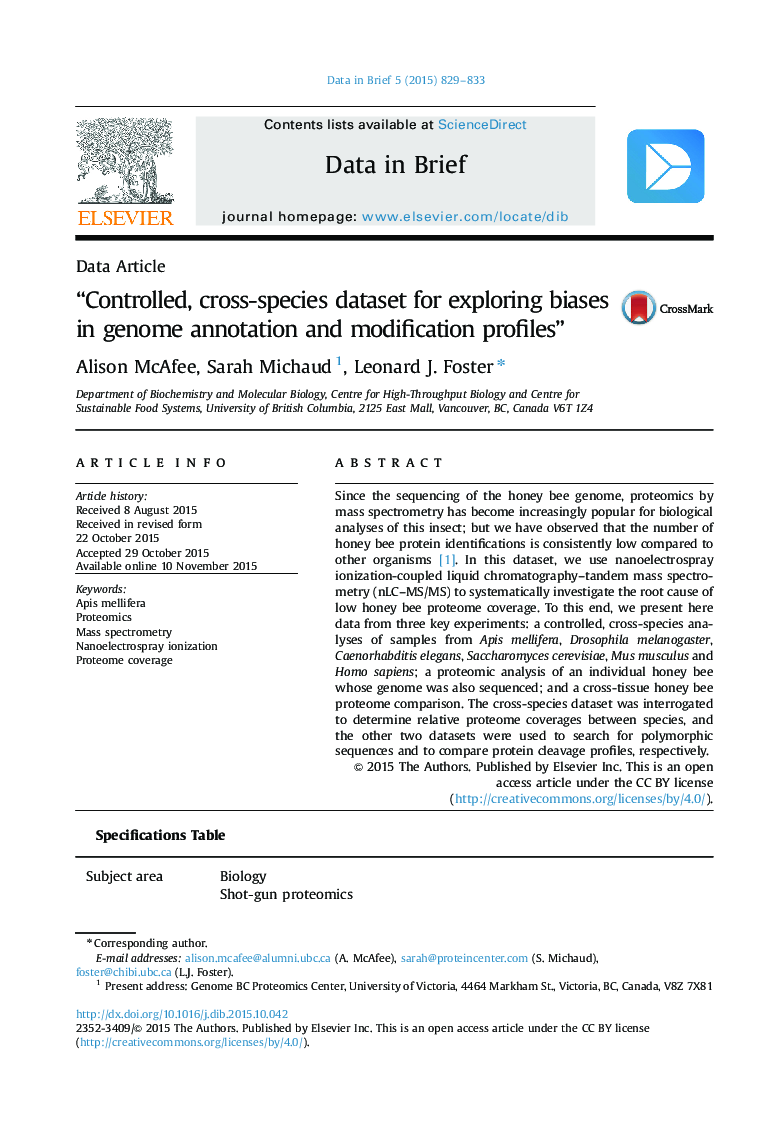| Article ID | Journal | Published Year | Pages | File Type |
|---|---|---|---|---|
| 174925 | Data in Brief | 2015 | 5 Pages |
Since the sequencing of the honey bee genome, proteomics by mass spectrometry has become increasingly popular for biological analyses of this insect; but we have observed that the number of honey bee protein identifications is consistently low compared to other organisms [1]. In this dataset, we use nanoelectrospray ionization-coupled liquid chromatography–tandem mass spectrometry (nLC–MS/MS) to systematically investigate the root cause of low honey bee proteome coverage. To this end, we present here data from three key experiments: a controlled, cross-species analyses of samples from Apis mellifera, Drosophila melanogaster, Caenorhabditis elegans, Saccharomyces cerevisiae, Mus musculus and Homo sapiens; a proteomic analysis of an individual honey bee whose genome was also sequenced; and a cross-tissue honey bee proteome comparison. The cross-species dataset was interrogated to determine relative proteome coverages between species, and the other two datasets were used to search for polymorphic sequences and to compare protein cleavage profiles, respectively.
